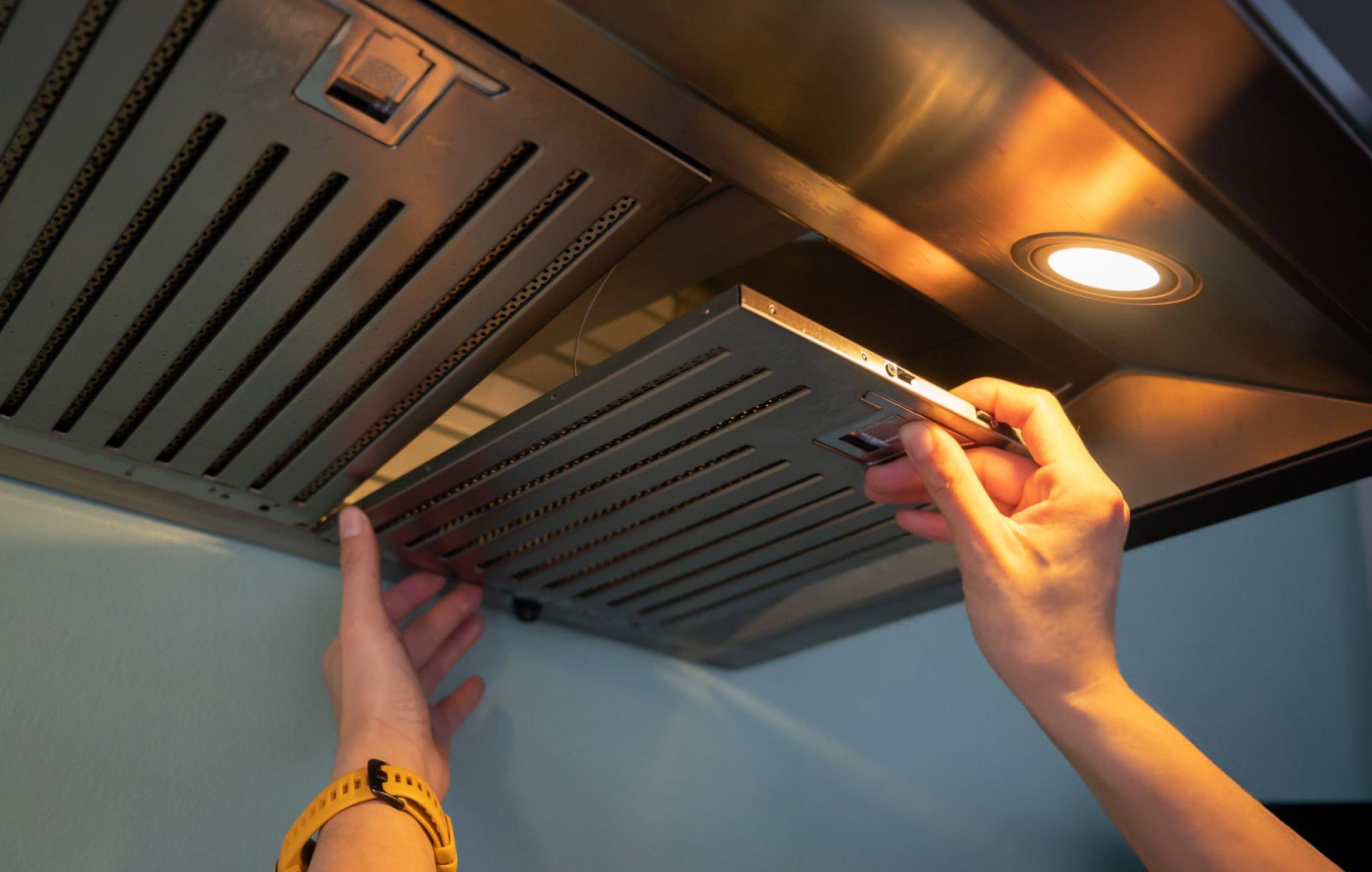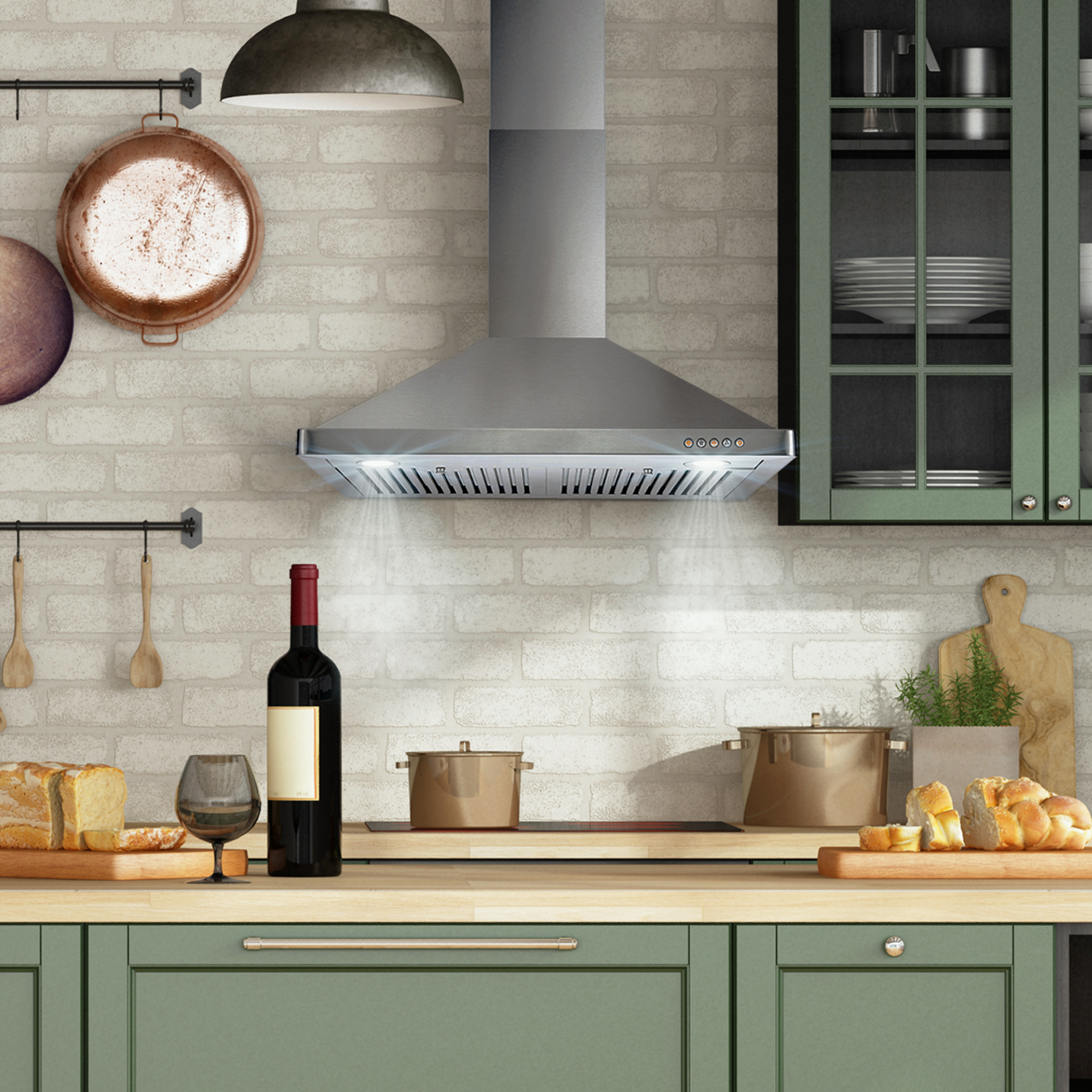Kitchen Ventilation: Why It Matters More Than You Think
Most homeowners focus on beautiful countertops, stylish cabinets, and eye-catching appliances when planning their dream kitchen. Kitchen ventilation often gets treated as an afterthought – something you add because building codes require it or because everyone else has a range hood. The truth is that proper kitchen ventilation affects your health, home value, cooking experience, and daily comfort in ways that go far beyond simply removing cooking odors. Understanding why kitchen ventilation matters helps you make better decisions about your kitchen design and appliance selection. Good ventilation protects your investment in your home while creating a healthier, more comfortable environment for your family. Poor ventilation, on the other hand, can lead to serious problems that cost thousands of dollars to fix and affect your family’s well-being for years. The Hidden Health Impacts of Poor Kitchen Ventilation Cooking produces more air pollutants than most people realize. Every time you fry, sauté, or grill food, you release fine particles into the air that can affect respiratory health. Gas cooking adds nitrogen dioxide and carbon monoxide to the mix, while even electric cooking produces ultrafine particles that can penetrate deep into lung tissue. Without proper ventilation, these pollutants accumulate in your home’s air, reaching concentrations that can exceed outdoor air quality standards. Children, elderly family members, and anyone with respiratory conditions are particularly vulnerable to these indoor air quality problems. The particles produced by cooking are small enough to remain airborne for hours after cooking ends. They circulate throughout your home via your HVAC system, affecting air quality in bedrooms, living areas, and anywhere your family spends time. Over time, exposure to these particles can contribute to respiratory problems, allergies, and other health issues. Grease particles don’t just disappear when cooking ends – they settle on surfaces throughout your home, creating a film that attracts dust and other contaminants. This buildup can trigger allergies and asthma while creating cleaning challenges that go far beyond your kitchen. High humidity from cooking can promote mold and mildew growth in areas where moisture accumulates. Bathrooms, basements, and other areas with poor air circulation become breeding grounds for mold when cooking moisture spreads throughout your home without proper ventilation. Protecting Your Home’s Structure and Finishes Cooking produces significant amounts of moisture and grease that can damage your home’s structure and finishes over time. Steam from boiling water, grease from frying, and heat from all cooking methods create conditions that can cause expensive damage when not properly managed. Moisture damage affects more than just your kitchen. Steam and humidity from cooking can cause paint to peel, wallpaper to loosen, and wood finishes to deteriorate throughout your home. Over time, excessive moisture can even damage drywall and promote rot in wooden structural elements. Grease buildup extends far beyond visible surfaces. Airborne grease settles on light fixtures, inside cabinets, on ceiling fans, and even in adjacent rooms. This buildup attracts dirt and dust, creating a cycle of contamination that makes your entire home harder to keep clean. Cabinet finishes suffer particularly from grease and steam exposure. Without proper ventilation, cabinet doors and frames develop a sticky film that attracts dirt and becomes increasingly difficult to clean. Over time, this exposure can cause finishes to break down, requiring expensive refinishing or replacement. Ceiling damage from cooking moisture and grease can be particularly costly to repair. Staining, discoloration, and finish degradation on ceilings require professional repair that often involves repainting entire rooms to achieve uniform appearance. HVAC system contamination occurs when cooking pollutants circulate through your home’s air handling system. Grease and particles can coat ductwork, reduce system efficiency, and require expensive professional cleaning to restore proper operation. The Real Cost of Inadequate Ventilation Poor kitchen ventilation creates costs that extend far beyond the initial savings of skipping a quality range hood. These costs accumulate over time and often exceed the investment in proper ventilation by substantial margins. Cleaning costs multiply when cooking pollutants spread throughout your home. Professional cleaning services, specialty products for grease removal, and the time required for extensive cleaning all add up to significant ongoing expenses. Maintenance and repair costs increase as cooking byproducts damage finishes, appliances, and home systems. Repainting, refinishing cabinets, cleaning HVAC systems, and repairing moisture damage can cost thousands of dollars that proper ventilation would prevent. Health care costs may increase due to respiratory problems caused by poor indoor air quality. While these costs are harder to quantify, the impact on quality of life and medical expenses can be substantial for affected family members. Energy costs rise when cooking moisture forces your HVAC system to work harder to maintain comfortable humidity levels. Air conditioning systems must remove excess moisture while heating systems work against the cooling effect of moisture evaporation. Resale value can be negatively affected by homes with inadequate ventilation that show signs of damage from cooking pollutants. Prospective buyers notice grease buildup, odors, and finish damage that suggest ongoing maintenance problems. Insurance claims may be denied for damage related to inadequate ventilation. Many policies don’t cover damage that results from homeowner neglect of proper maintenance and ventilation systems. How Proper Ventilation Transforms Your Cooking Experience Good kitchen ventilation does more than prevent problems – it actively improves your cooking experience and makes your kitchen more pleasant to use. The benefits go far beyond removing odors to create an environment where cooking becomes more enjoyable and successful. Temperature control improves dramatically with proper ventilation. Removing heat from cooking prevents your kitchen from becoming uncomfortably warm during meal preparation, especially important during summer months or when preparing large meals. Comfort levels increase when steam, smoke, and cooking odors are effectively removed. You can cook without opening windows, run air conditioning efficiently, and maintain pleasant conditions throughout your home regardless of what you’re preparing. Cooking confidence grows when you’re not worried about setting off smoke alarms or filling your home with cooking odors. You can experiment with new techniques, cook at higher temperatures, and prepare aromatic dishes without concern about the effects on your


